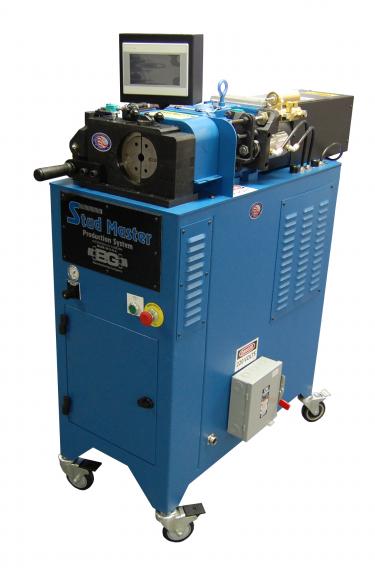The History of Stud Manufacturing
Historically Studs were chamfered on a belt sander and hand stamped. This process was labor intensive and costly not to mention the increased risk for mistakes. Another method for stud manufacturing is chamfering in a lathe if the chamfer dimensions are precise such as for critical industries like aerospace, energy, and medical. Our studmaster machine significantly cuts down on production time and costs. A chamfer is a transitional edge between two sides of an object that is often created between the two sides of a 90* Angle. It is used in many applications to help ease with assembly when multiple pieces are involved and also removes a sharp edge which reduces room for workplace injuries. With metal applications it prevents damage to the metal. The chamfered end is also called a “lark’s tongue” due to the similarity in shape.
Introducing B+G’s Studmaster Machine
Why did we create this machine and what manufacturing needs does it fulfill? We originally created this machine to fulfill our own production needs for chamfering and stamping. We had a high internal demand for these processes and put efforts into finding a long-lasting solution. After creating the studmaster machine and discovering how well it works in application we took it to the market.

What makes the Studmaster Machine easy to use compared to other manufacturing methods?
The studmaster machine offers customizable settings so you can get the product you want by your deadline. The interchangeable collets and stamps make repeated projects especially easy. Plus, the easy to set speed and feed rates make the machine easy for use. This machine is much faster than traditional chamfering and stamping methods. Not to mention the size of the studmaster machine is small enough to be placed in tight spaces which ideally could be near your saws. With this machine next to your saws it allows an operator to multitask; They can continue sawing studs while chamfering and stamping parts.


 Hatfield
Hatfield

